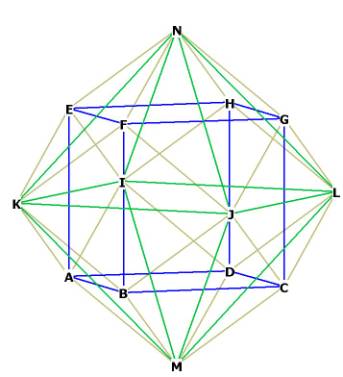|
(2019
midterm assignment) Model Midterm answers 2019 (Index) Essay 2: Start Research Report |
 |
Sage Butler
Blessed Be the Fruit
When reading narratives of the future,
one characteristic I have noticed is that reproductive health plays a critical
role in the outcome of a society. Fertility influences mental health, the laws
that govern us, and the role of women. These relationships are not only evident
in literature, but also in studies that have been conducted on the topic.
One significant work of literature that
depicts this is Handmaid’s Tale by
Margaret Atwood. With reproductive health rapidly dissipating in the novel, the
United States becomes “Gilead,” a patriarchal society where the “handmaids”—the
few fertile women left—become enslaved, raped, and devalued. In Gilead, any
inability to procreate is blamed on the women, as even “sterile” is a forbidden
word, which leaves the wives feeling shameful and helpless. The reproductive
health crisis in this novel leads to the oppression of women and regression of
society as a whole, as the elite men in this society decide that equality and
moving away from God is the reason for this, and use that to justify controlling
women. Handmaid’s Tale was written as
a warning for many issues present that could lead to the downfall of our
society, including reproductive health, which is often taken less seriously by
many in the medical community.
This is verified through the reports of women, as well
as various studies on the topic. Kiesel (2017) reported that “70% of the people
[chronic pain] impacts are women. And yet, 80% of pain studies are conducted on
male mice or human men. One of the few studies to research gender differences in
the experience of pain found that women tend to feel it more of the time and
more intensely than men.” This discrepancy is supported by numerous sources, and
seems to be especially common when discussing reproductive health, one example
of such being that it takes an average of seven years to get diagnosed with
endometriosis (Arruda, Abrea, Benetti-Pinto, and Petta, 2003), a condition that
often causes chronic pain, abnormal menstrual cycles, and fertility issues. This
may be one contributing factor to the rising infertility rates—according to
Premier Health (2018), up to one in seven couples trying to conceive may
struggle with infertility. Another concern is the cost of treatment for
infertility, as the “cost for one cycle as a percent of the average annual
disposable income of a single person with no dependent children [was] over 50%
in the US and Mexico.” The cost of fertility treatments make it so that only the
wealthy have a decent chance of success, which parallels the role of
socioeconomic status and having a handmaid in
Handmaid’s Tale.
Though there are no great examples of
infertility in literature we examine in our course, there is some work worthy of
examining. In Parable of the Sower,
we read that women seem to have children pretty easily, and often at a young
age. However, considering the lack of access to food and water, it is surprising
that women are able to conceive and deliver healthy babies, which is not what we
would expect, since “because preservation of female energy expenditure for
reproduction is essential, appetite and the reproductive axis are closely linked
to nutritional status. As a safeguard against untimely reproduction due to
undernutrition, ovarian activity is suppressed…” (The ESHRE Capri Workshop
Group, 2006). Since the reproductive system is non-essential for survival, it is
unexpected that the undernourished women from this novel would be able to
reproduce so easily. The only other connection I could potentially make to the
course texts is The Time Machine. In
the novel, there is no evidence of pregnancy or even biological sex differences
in the Eloi or Morlocks, which could indicate an inability to reproduce, which
could have long-term negative implications as they all inevitably die. Not
having children also may be part of why the Eloi struggle to care for others,
since they may have no desire to nurture and ensure the wellbeing of another
being.
As we continue in the course, I look
forward to more opportunities to explore this topic and learn more about how it
can influence our society.
References
Arruda, Abrea, Benetti-Pinto, and Petta. “Time Elapsed
from Onset of Symptoms to Diagnosis of Endometriosis in a Cohort Study of
Brazilian Women.” OUP Academic, Oxford University Press, 1 Apr. 2003,
academic.oup.com/humrep/article/18/4/756/596537.
Atwood, Margaret. Handmaid’s Tale. Jonathan Cape LTD,
1985.
Butler, Octavia E. Parable of the Sower. Grand Central
Pub, 1993.
Kiesel, Laura. “Women and Pain:
Disparities in Experience and Treatment.” Harvard Health, Harvard University, 7
Oct. 2017,
www.health.harvard.edu/blog/women-and-pain-disparities-in-experience-and-treatment-2017100912562.
Klitzman, Robert. “How Much Is a Child Worth? Providers'
and Patients' Views and Responses Concerning Ethical and Policy Challenges in
Paying for ART.” Plos One, Public Library of Science, 16 Feb. 2016,
journals.plos.org/plosone/article?id=10.1371/journal.pone.0171939.
The ESHRE Capri Workshop Group. “Nutrition and
Reproduction in Women.” OUP Academic, Oxford University Press, 31 Jan. 2006,
academic.oup.com/humupd/article/12/3/193/554114#8787238.
Wells, H. G. The Time Machine. Legend Press, 1895.
“What’s Up with Rising Infertility Rates?” Premier
Health, 23 Jan. 2018,
www.premierhealth.com/Women-Wisdom-Wellness/Content/What-s-Up-with-Rising-Infertility-Rates-/.
 |
 |
 |
